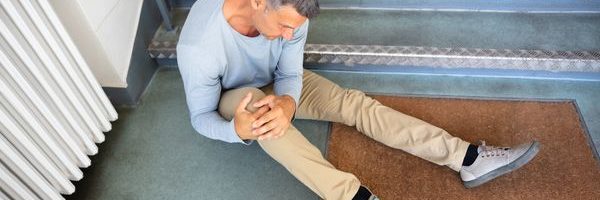Slip and falls sometimes sound trivial and like something out of a movie. However, slip and fall accidents can result in serious, sometimes debilitating injuries. Falls are the leading cause of traumatic brain injury, and deaths from fall-related traumatic brain injuries are on the rise. Determining who is responsible for these injuries is not always a straightforward undertaking.
Under the concept of premises liability, a business or property owner is responsible for maintaining their premises in a reasonably safe condition. An owner could be held liable for injuries that result from a dangerous condition that they created, that they knew about and failed to repair, or that they should have known about if they had exercised reasonable care. It seems obvious that a property owner should be liable for injuries resulting from dangerous conditions on their property, but what if the injured party is partially to blame for the fall.
The Injured Party’s Negligence
There are some ways that an injured party can contribute to a slip and fall injury. The most common situation is that there is a dangerous condition, such as a torn carpet, and the injured party is looking at their phone and not paying attention and trips on the carpet and is injured. Maybe the injured party was wearing ill-fitting stiletto heels and slipped and fell on a patch of ice outside a building. Could these accidents have been avoided if the injured party hadn’t been doing something negligent themselves? That’s a question a jury will determine.
Comparative Negligence
Even if you were partially responsible for your own slip and fall injury, you might not be out of luck. The fact that you were looking at your phone when you were walking does not absolve a property owner of their duty to maintain a safe premises. In New York, there is a concept called comparative negligence wherein a jury will determine the degree to which each party is negligent. Comparative negligence must be raised by the defense at trial, and they have the burden of proof of showing you were negligent.
If comparative negligence has been raised and the defendant is found to have been negligent, the jury will then look at the victim’s actions and to what degree they were responsible for their own injury. For example, if someone tripped on torn carpeting while they were looking at their phone, a jury may determine that they were negligent. The jury may find that the defendant was 80% negligent in failing to fix the torn carpeting, and the victim was 20% negligent in walking while looking at their phone. Any damages award from the jury would then be divided by the degree of negligence. Therefore, if the jury determined that damages sustained by the victim totaled $100,000, then the defendant would have to pay 80% of those damages or $80,000.
The issues involved in a comparative negligence case can be complex. Therefore, it’s important that you consult with a personal injury attorney.
Contact an Experienced Slip and Fall Attorney
If you’ve been injured in a slip and fall accident, you should consult with an experienced and trusted attorney. At Bonina & Bonina, P.C., we have been helping the victims of slip and fall accidents for over 50 years. Contact us online or call us at 1-888-MEDLAW1 to schedule your free consultation. Home and hospital visits are available. Se habla español.

